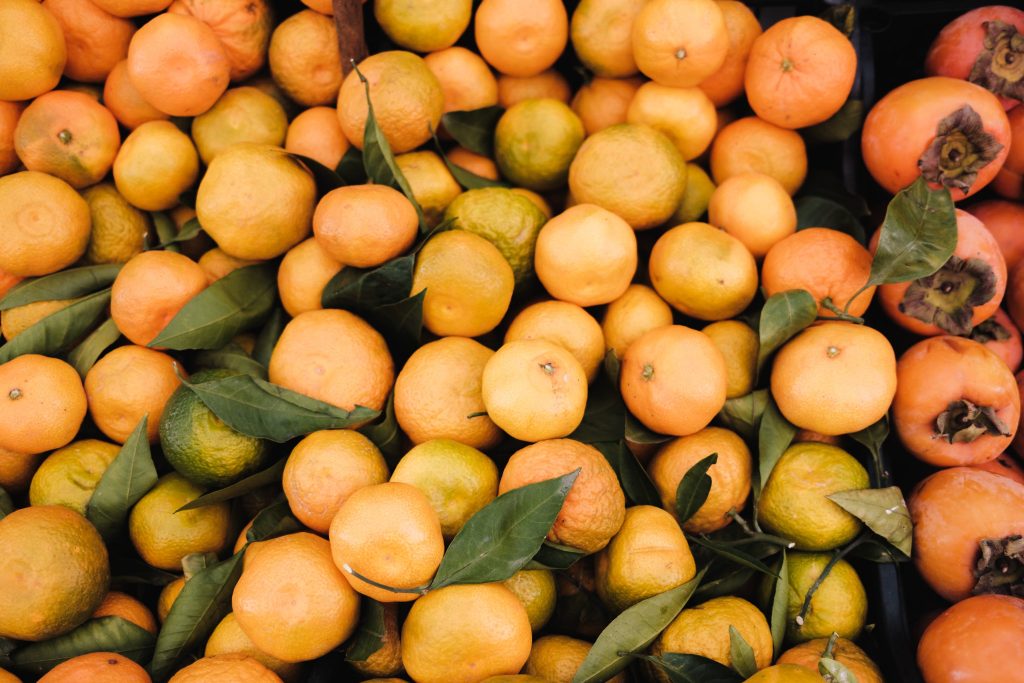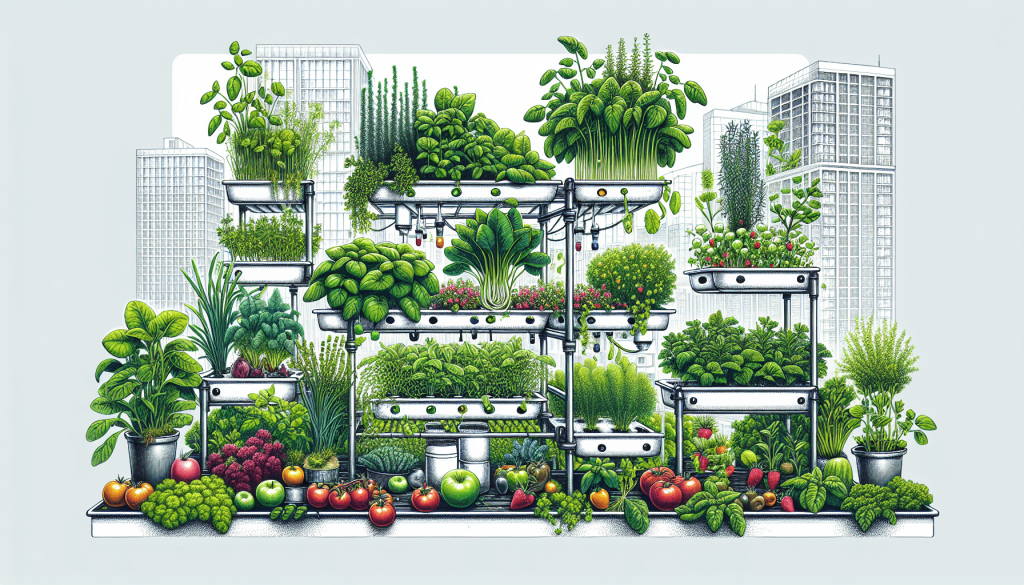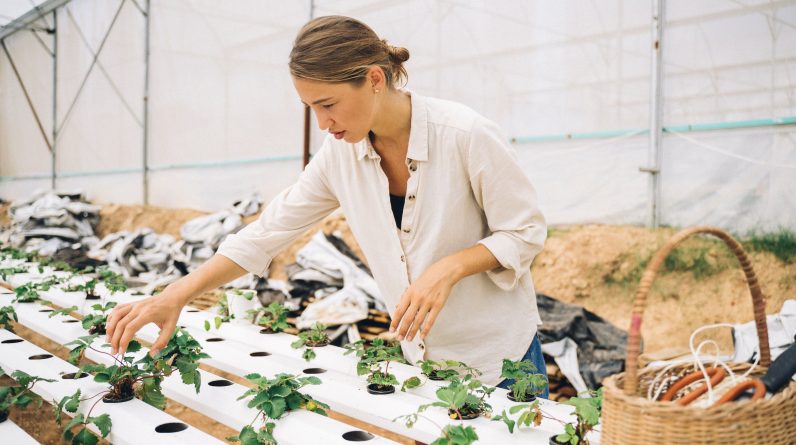
In today’s world where space is a luxury, finding creative solutions for gardening can be a challenge. But fear not, because “Hydroponic Gardening for Small Spaces” has got you covered! This article explores the fascinating world of hydroponic gardening, a method that allows you to grow plants without soil, making it perfect for those limited by space constraints. Get ready to discover the wonders of this innovative technique and unlock your green thumb, even in the smallest of spaces!

Benefits of Hydroponic Gardening
Hydroponic gardening, a method of growing plants without soil, offers numerous benefits that make it an attractive option for both experienced gardeners and beginners alike. By eliminating the need for soil, hydroponic gardening conserves water, makes efficient use of limited space, and allows for year-round gardening.
No need for soil
One of the primary advantages of hydroponic gardening is that it eliminates the need for traditional soil. Instead, plants are grown in a nutrient-rich water solution, providing them with all the necessary elements for healthy growth. This means that gardeners no longer have to rely on the quality of the soil in their area, making hydroponic gardening a viable option regardless of location.
Conserves water
Water scarcity is a growing concern, and hydroponic gardening offers a solution to minimize water usage. In a hydroponic system, plants are grown in a water-based environment where water is recirculated and reused. Unlike traditional gardening, which can result in significant water loss through evaporation or ineffective watering techniques, hydroponic systems deliver water directly to the plant’s roots, minimizing wastage. This water-efficient approach is particularly important in regions where water resources are limited or costly.
Efficient use of space
For those with limited garden space or living in apartments or urban areas, hydroponic gardening provides a perfect solution. Hydroponic systems are designed to maximize space utilization by growing plants vertically or in compact setups. With hydroponics, you can maximize your growing area by utilizing walls, shelves, or specially designed vertical systems. This efficient use of space allows you to grow a wide variety of plants even in a small area.
Allows for year-round gardening
Traditional gardening is often limited by the seasons, as plants require specific conditions to thrive. However, hydroponic gardening enables year-round cultivation by creating an artificially controlled environment. By providing optimal lighting, temperature, and humidity levels, hydroponic systems allow plants to grow and flourish regardless of the external climate. This means that you can enjoy garden-fresh produce all year long, regardless of the season.
Choosing a Hydroponic System
When getting started with hydroponic gardening, it’s important to select the right hydroponic system that suits your needs and resources. There are several popular hydroponic systems available, each with its own unique features and requirements. Here are some of the most common hydroponic systems to consider:
Wick system
The wick system is one of the simplest and most beginner-friendly hydroponic systems available. It consists of a growing tray, a reservoir for the nutrient solution, and a wick that transports the solution to the plant’s roots. This passive system relies on capillary action to deliver water and nutrients to the plants, making it a low-maintenance option.
Water culture system
The water culture system, also known as the deep water culture system, is another easy-to-implement hydroponic system. In this system, plants are suspended in a nutrient-rich water solution, with their roots directly submerged in the water. An air pump is used to oxygenate the water and provide necessary aeration to the roots. The simplicity of this system makes it a popular choice for growing lettuce and other leafy greens.
Drip system
The drip system is a widely used hydroponic system that delivers water and nutrients directly to the plant’s roots through a series of drip emitters. This system can be set up in various configurations, such as a top-down or bottom-up design. The drip system allows for precise control over nutrient delivery and is suitable for a wide range of plants, from herbs to vegetables.
Nutrient film technique (NFT) system
The NFT system is a continuous flow hydroponic system where a thin film of nutrient-rich water is circulated over the roots of the plants. The roots are partially submerged in the nutrient solution, allowing them to absorb the necessary water and nutrients. The excess water is then drained back into a reservoir for reuse. The NFT system is particularly effective for growing salad greens and herbs.
Aeroponic system
The aeroponic system is considered one of the most advanced hydroponic systems. It involves suspending the plant’s roots in mid-air and periodically misting them with a nutrient-rich solution. This misting provides the roots with oxygen and nutrients, promoting rapid growth. The aeroponic system offers excellent oxygenation but requires careful monitoring and maintenance.
When choosing a hydroponic system, consider factors such as your available space, resources, and level of expertise. Each system has its own advantages and limitations, so select the one that aligns best with your gardening goals and capabilities.
Setting up a Hydroponic Garden
Setting up a hydroponic garden involves several key steps to ensure the success of your plants. By following these steps, you can create an ideal environment for your hydroponic system and provide the necessary resources to support plant growth.
Selecting a suitable location
The first step in setting up your hydroponic garden is to select a suitable location. Choose an area that receives ample natural light or, alternatively, set up appropriate artificial lighting to provide the necessary light energy for photosynthesis. Additionally, consider factors such as temperature, humidity, and accessibility when determining the location for your hydroponic system.
Assembling the hydroponic system
Once you have chosen the location, it’s time to assemble your hydroponic system. Follow the manufacturer’s instructions carefully to ensure proper setup. Depending on the type of system you have chosen, you may need to arrange growing trays, install pumps or misters, connect tubing, and set up a reservoir to hold the nutrient solution. Take your time to assemble the system accurately, as any mistakes could lead to issues later on.
Choosing the right nutrient solution
In hydroponic gardening, plants rely on nutrient solutions to obtain the necessary elements for growth. It is crucial to select the right nutrient solution that provides a balanced mix of essential nutrients for your plants. Options include pre-formulated nutrient solutions specifically designed for hydroponics or DIY solutions where you mix your own nutrients. Consider the specific requirements of the plants you intend to grow and their growth stages when selecting a nutrient solution.
Providing adequate lighting
Light is one of the most important factors affecting plant growth and development. If your hydroponic garden is located in an area with limited natural light, you will need to supplement it with artificial lighting. LED grow lights are a popular choice for hydroponic gardens, as they provide the necessary spectrum of light for optimal plant growth while consuming less energy. Position the lights at an appropriate distance from the plants to ensure they receive adequate light without causing damage.
Maintaining optimal temperature and humidity levels
Temperature and humidity play significant roles in the success of your hydroponic garden. Different plants have specific temperature and humidity requirements, so it’s essential to maintain suitable conditions for your chosen crops. Most plants thrive in temperatures between 70-80°F (21-27°C) and relative humidity of 40-60%. Use thermometers and hygrometers to monitor the temperature and humidity levels in your hydroponic garden and make adjustments as necessary.
By carefully attending to each of these steps, you can establish a well-functioning hydroponic garden and provide an optimal environment for your plants to thrive.
Selecting Suitable Plants for Hydroponic Gardening
Hydroponic gardening allows for the cultivation of a wide variety of plants. However, certain plants are particularly well-suited for hydroponic systems due to their growth characteristics and nutrient requirements. Here are some popular plant choices for hydroponic gardening:
Leafy greens
Leafy greens such as lettuce, spinach, and kale are ideal plants for hydroponic gardening. They can be grown easily in a variety of hydroponic systems, and their shallow root systems make them well-suited for nutrient-rich water solutions. Leafy greens also have relatively short growth cycles, allowing for continuous harvesting.
Herbs
Herbs like basil, mint, and cilantro thrive in hydroponic systems. They require ample light and well-balanced nutrient solutions. Herbs have compact growth habits, making them suitable for small hydroponic setups. Growing herbs hydroponically ensures a constant supply of fresh, flavorful additions to your culinary creations.
Tomatoes
Tomatoes are popular garden plants, and they can also thrive in hydroponic systems. With the proper support structure and adequate lighting, tomatoes can develop strong vines and produce abundant fruits. Dwarf or cherry tomato varieties tend to be more suitable for hydroponic gardening due to their smaller size and high productivity.
Cucumbers
Cucumbers are another vegetable that can thrive in hydroponic gardens. They require a trellis or other support structure to allow their vines to grow vertically. Cucumbers are heavy feeders, so providing a nutrient-rich solution is essential. With proper care, hydroponically grown cucumbers can yield high-quality fruits throughout the year.
Strawberries
Strawberries are a popular fruit choice for hydroponic gardening. They have a compact growth habit and can be grown in containers or vertical systems. Strawberries require ample light, well-aerated roots, and a nutrient solution that supports flowering and fruiting. Hydroponic strawberries offer the advantage of reducing the risk of soil-borne diseases and pests.
Lettuce
Lettuce is perhaps one of the most common crops grown in hydroponic systems. Its shallow roots and fast growth make it an ideal choice for those new to hydroponic gardening. Lettuce can be grown from seed to harvest in just a few weeks, allowing for continuous production of fresh, crisp greens.
When selecting plants for your hydroponic garden, consider their growth requirements, the available space in your setup, and your personal preferences. With the right combination of plants, you can create a bountiful and diverse hydroponic garden.

Caring for Your Hydroponic Garden
Proper care is essential for maintaining the health and productivity of your hydroponic garden. Regular monitoring and maintenance tasks will ensure that your plants receive the necessary resources and remain free from potential issues. Here are some care tips for your hydroponic garden:
Monitoring pH levels
pH is a crucial factor in hydroponic gardening, as it affects nutrient availability and plant absorption. Invest in a pH testing kit or meter to regularly monitor the pH levels of your nutrient solution. Most plants prefer a slightly acidic to neutral pH range of 5.5-6.5. If the pH deviates from the optimal range, adjust it using pH-up or pH-down solutions or additives specifically designed for hydroponics.
Maintaining nutrient levels
Nutrient levels in your hydroponic system need to be carefully monitored and maintained. Follow the instructions provided with your chosen nutrient solution to determine the appropriate concentration for your plants. Regularly check the EC (electrical conductivity) of the solution using an EC meter to ensure it falls within the desired range. Adjust the nutrient solution as needed to maintain the right balance of nutrients for optimal plant health and growth.
Regularly checking the water pump and system
The water pump is a critical component of your hydroponic system, as it circulates the nutrient solution to the plants. Regularly check the pump to ensure it is functioning correctly and free from clogs or debris. Inspect the tubing, fittings, and other system components for any leaks or damage. Maintaining a well-functioning system will prevent interruptions in nutrient delivery and promote healthy plant growth.
Pruning and training plants
Proper pruning and training techniques can help maximize space utilization and encourage healthy plant growth. Remove any dead or yellowing leaves, as well as any unwanted growth. Train vining plants, such as cucumbers or tomatoes, by gently tying their stems to a trellis or stake for support. Pruning and training promote better air circulation, reduce the risk of disease, and improve the overall appearance of your hydroponic garden.
Preventing pest infestations
Hydroponic gardens are not immune to pests, so it’s essential to take preventive measures to keep them at bay. Regularly inspect your plants for signs of pests, such as aphids or spider mites. Use organic insecticides or beneficial insects like ladybugs to control infestations. Maintaining proper cleanliness and hygiene in your hydroponic system will also reduce the chances of pest problems.
By consistently caring for your hydroponic garden, you can ensure the long-term health and productivity of your plants, leading to a successful harvest.
Harvesting and Enjoying Your Hydroponic Produce
One of the most rewarding aspects of hydroponic gardening is the ability to harvest and enjoy your homegrown produce. Here are some tips to help you make the most of your hydroponic harvest:
Knowing when to harvest
Different plants have different indicators to determine optimal harvest time. For leafy greens, harvesting can begin as soon as the leaves reach a usable size. Herbs should be harvested before they start flowering for the best flavor. Tomatoes, cucumbers, and strawberries are typically harvested when the fruits have reached their mature size and are fully ripe. Pay attention to the growth cycle and specific requirements of each plant to determine the ideal time to harvest.
Properly storing the harvested produce
After harvesting, it’s essential to handle and store your hydroponic produce correctly to maintain its freshness and flavor. Leafy greens should be rinsed, gently dried, and stored in airtight containers or bags in the refrigerator to maintain crispness. Herbs can be stored by wrapping them in damp paper towels and placing them in a sealed container in the refrigerator. Fruits, such as tomatoes or strawberries, are best stored at room temperature to retain their flavor and texture.
Creative recipes and meal ideas
Hydroponic produce offers a fresh and flavorful base for creating delicious meals. Experiment with various recipes to fully enjoy the fruits of your hydroponic gardening labor. Whip up gourmet salads using your homegrown lettuce and herbs, or create refreshing smoothies with hydroponic strawberries. Incorporate freshly harvested tomatoes and cucumbers into sandwiches or make homemade salsas. The possibilities are endless when it comes to using your hydroponic produce in your favorite dishes.
By harvesting at the right time and storing your hydroponic produce correctly, you can savor the flavors of your garden-fresh produce and enjoy the satisfaction of eating what you have grown.

Troubleshooting Common Hydroponic Gardening Issues
Hydroponic gardening, like any other cultivation method, can face certain challenges or issues. By being aware of common problems and proactively addressing them, you can maintain a healthy and thriving hydroponic garden. Here are some common hydroponic gardening issues and their solutions:
Algae growth
Algae growth in your hydroponic system can affect nutrient availability and harm your plants. To prevent algae growth, ensure that your hydroponic system is light-tight or shielded from excessive light exposure. Avoid using transparent or translucent materials for your system components, as they can allow light to penetrate the nutrient solution. Regularly clean and sterilize your system to eliminate any algae spores that may be present.
Root rot
Root rot is a common issue in hydroponic systems caused by excessive moisture and poor oxygenation. To prevent root rot, ensure proper drainage in your growing media or system. Avoid overwatering your plants, and maintain appropriate oxygenation levels in the nutrient solution using air pumps or airstones. If you notice signs of root rot, such as wilted or discolored roots, trim away the affected areas and adjust your watering practices.
Nutrient deficiencies or imbalances
Nutrient deficiencies or imbalances can occur if your plants are not receiving the proper nutrients in the correct proportions. Regularly monitor the nutrient levels in your hydroponic system and adjust your nutrient solution accordingly. Leaf discoloration or abnormal growth patterns can indicate nutrient issues. Consult a nutrient chart or consult with experienced hydroponic growers to address specific nutrient deficiencies or imbalances.
Temperature and humidity fluctuations
Fluctuations in temperature and humidity can stress your plants and impact their growth. Maintain stable temperature and humidity levels within the optimal range for your plants. Use fans or ventilation systems to regulate temperature and promote air circulation. Consider incorporating a dehumidifier or humidifier, depending on your specific needs, to control humidity levels in your hydroponic garden.
By addressing these common hydroponic gardening issues promptly and implementing preventive measures, you can ensure the health and vitality of your plants.
Scaling Up Your Hydroponic Garden
Once you have gained experience with hydroponic gardening and achieved success on a smaller scale, you may decide to expand your system and increase your crop yields. Here are some factors to consider when scaling up your hydroponic garden:
Expanding your system
Expanding your hydroponic system involves increasing the size or capacity of your existing setup. This could mean adding more growing trays, installing additional pumps or misters, or constructing larger reservoirs. Consider the available space, resources, and your intended crop selection when determining the scale of your expansion. Plan and prepare the necessary components and adjust your nutrient solution accordingly to accommodate the increased demand.
Planning for larger crop yields
Scaling up your hydroponic garden requires careful planning to ensure you meet the demands of larger crop yields. Consider the growth requirements and space utilization of the plants you intend to grow. Optimize the setup to maximize crop yield while maintaining an efficient and manageable garden. You may need to adjust lighting, spacing, and nutrient delivery systems to meet the increased workload.
Managing multiple hydroponic units
As you expand your hydroponic garden, you may find it necessary to manage multiple hydroponic units simultaneously. This can involve coordinating watering and nutrient schedules, monitoring individual system parameters, and maintaining consistent care across all units. Establish a systematic approach to manage your multiple units efficiently, ensuring that each one receives the appropriate attention and resources.
Scaling up your hydroponic garden allows you to increase your productivity and enjoy a wider variety of homegrown produce. With careful planning and implementation, you can achieve a successful expansion of your hydroponic system.

Hydroponic Gardening Innovations
As technology advances, so do the innovations in hydroponic gardening. These innovations aim to improve efficiency, optimize plant growth, and make hydroponics more accessible to both commercial growers and enthusiasts. Here are some notable hydroponic gardening innovations:
Vertical hydroponic systems
Vertical hydroponic systems provide an innovative solution to maximize space utilization and increase crop yields. These systems utilize vertical structures or towers to grow plants in multiple layers, taking advantage of unused vertical space. Vertical hydroponics allow for higher plant densities, increased productivity, and greater diversity in a smaller footprint. They are particularly beneficial for those with limited space or urban locations.
Smart hydroponics
Smart hydroponics integrates technology and automation into hydroponic systems, making them more efficient and user-friendly. These systems incorporate sensors, controllers, and software to monitor and control various aspects of the growing environment. Smart hydroponics offer features such as automated nutrient dosing, remote monitoring and control, and precise environmental regulation. This technology simplifies operation, reduces the risk of human error, and optimizes plant growth.
Automated nutrient monitoring systems
Nutrient monitoring systems automate the process of measuring and adjusting nutrient levels in hydroponic systems. These systems utilize sensors and probes to continuously monitor the nutrient solution’s pH, EC, and temperature, allowing for real-time adjustments. Automated nutrient monitoring systems save time and effort by providing accurate and reliable data, ensuring optimal nutrient delivery to the plants.
These innovations in hydroponic gardening are revolutionizing the way plants are grown, making it easier, more efficient, and more accessible for individuals and commercial growers to enjoy the benefits of hydroponics.
Conclusion
Hydroponic gardening offers numerous benefits, from conserving water and making efficient use of limited space to enabling year-round gardening. By selecting the right hydroponic system, setting up a suitable environment, choosing suitable plants, and providing proper care, you can establish a thriving hydroponic garden. Harvesting and enjoying your hydroponic produce allows you to savor the flavors of homegrown fruits, vegetables, and herbs. With troubleshooting knowledge, you can overcome common challenges and ensure the long-term success of your hydroponic garden. As you gain experience, you may choose to scale up your hydroponic garden and explore innovative technologies that further enhance your gardening journey. Through hydroponic gardening, you can cultivate a greener thumb, reduce your environmental impact, and enjoy the rewards of fresh and healthy produce right at home.








